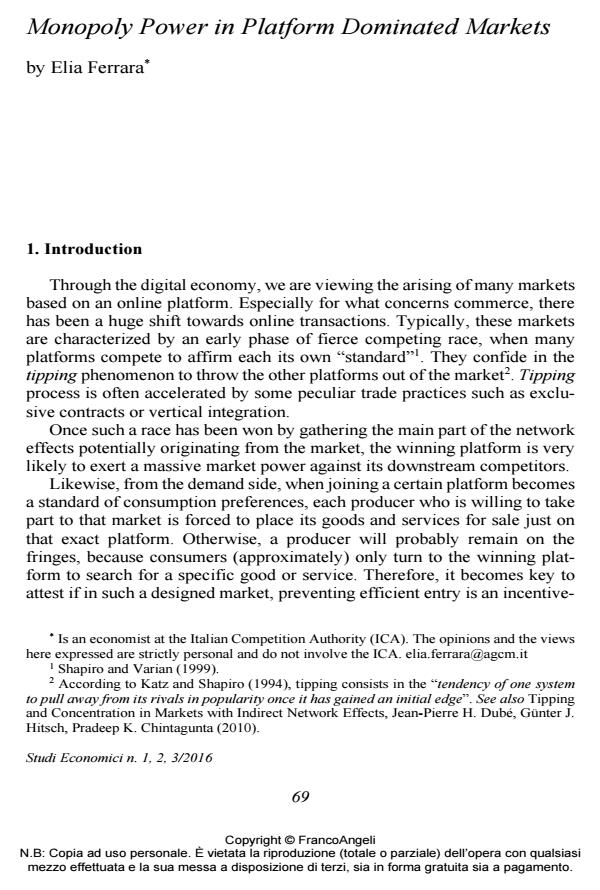Monopoly Power in Platform Dominated Markets
Titolo Rivista STUDI ECONOMICI
Autori/Curatori Elia Ferrara
Anno di pubblicazione 2017 Fascicolo 2016/118-119-120
Lingua Inglese Numero pagine 19 P. 69-87 Dimensione file 260 KB
DOI 10.3280/STE2016-118005
Il DOI è il codice a barre della proprietà intellettuale: per saperne di più
clicca qui
Qui sotto puoi vedere in anteprima la prima pagina di questo articolo.
Se questo articolo ti interessa, lo puoi acquistare (e scaricare in formato pdf) seguendo le facili indicazioni per acquistare il download credit. Acquista Download Credits per scaricare questo Articolo in formato PDF

FrancoAngeli è membro della Publishers International Linking Association, Inc (PILA)associazione indipendente e non profit per facilitare (attraverso i servizi tecnologici implementati da CrossRef.org) l’accesso degli studiosi ai contenuti digitali nelle pubblicazioni professionali e scientifiche
This paper gives a representation of a platform-dominated market. We characterize a market where a vertically integrated sales platform compete downstream with a firm selling a smaller subset of goods. The platform owner and the down-stream firm compete through the price (quantity variable) and the delivery time (quality variable), We find that in equilibrium the demand for the competitor’s good is more elastic than the platform owner’s demand with respect to the delivery time and that competitor’s consumers are more sensitive to changes in the delivery times rather than in the price. Furthermore, we find that when the platform owner’s demand elasticity is sufficiently high, then it could partially discipline the market power the platform owner can exert against its downstream competitor. However, if the cross-price elasticity is significant as well, the platform owner is likely to un-dermine the strength of competition by raising the access price to its platform.
Parole chiave:Platform, competition, regulation, vertical restraints, access price, mar-ket power
Jel codes:D42, D43, L41, L43, L51
Elia Ferrara, Monopoly Power in Platform Dominated Markets in "STUDI ECONOMICI " 118-119-120/2016, pp 69-87, DOI: 10.3280/STE2016-118005